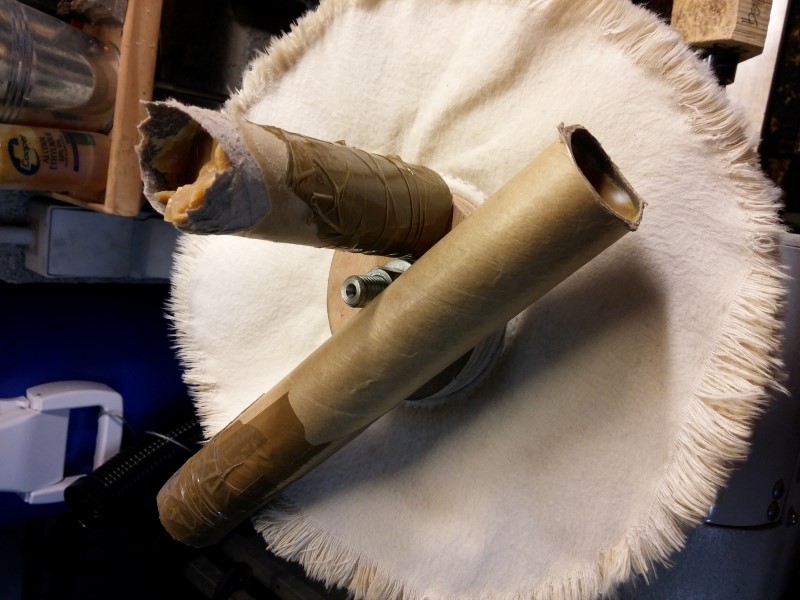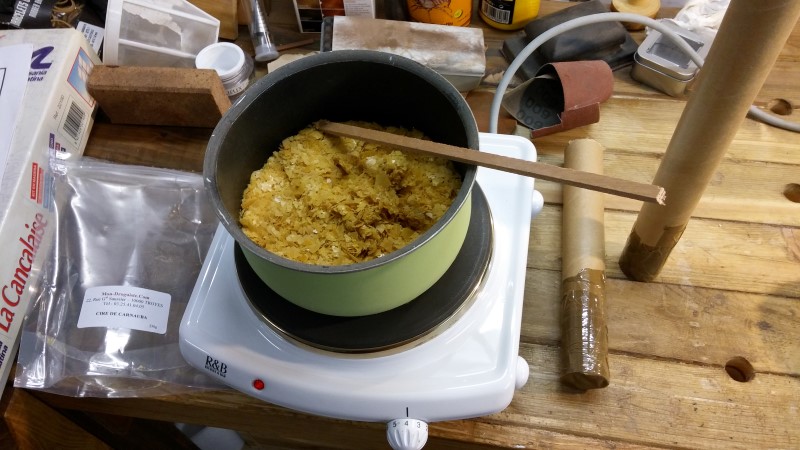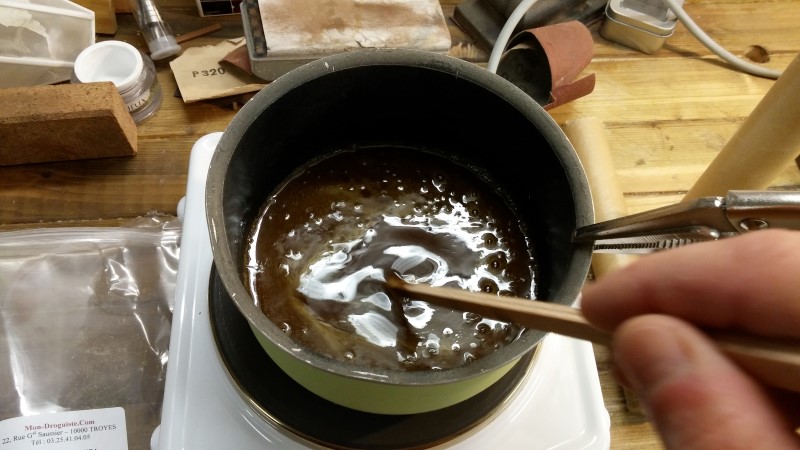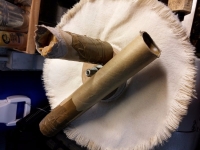Hi,
Carnauba Wax is my finish of choice for any piece of wood working, it is shiny, looks great (and not plastic), it is tough, and it is food safe.
The most efficient way to apply it, especially if you want to keep it tough, is to avoid melting it with (too much) bees wax or turpentine, and keep it rock hard, applying it with a flannel buffing wheel.
Getting such raw Carnauba blocks is not that easy, even if you can find it in wood-turners supply shops, it is often expensive.
Far less expensive is the raw Carnauba sold as a wax ingredient, but unfortunately, it is sold in flakes.
Here is how I melt the Carnauba flakes and mold them to the shape of sticks, using some cardboard tubes.
It is handy to keep it in the cardboard, and just tear up the top of the cardboard when you need a new chunk.
Take care however, the pure Carnauba keeps brittle and don't forget to wear eye protection when you apply it to the spinning wheel.



 LinkBack URL
LinkBack URL About LinkBacks
About LinkBacks





 Reply With Quote
Reply With Quote






Bookmarks